Miele K1811SF, K1911SF, K1801SF, K1901SF User Manual
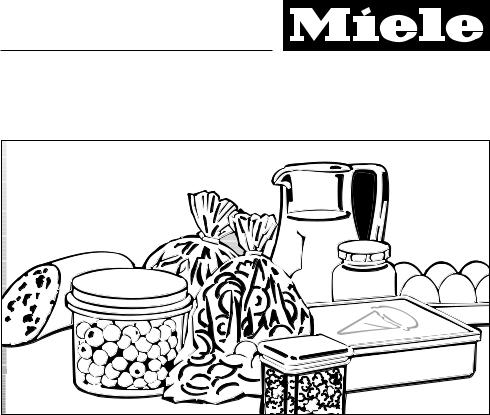
Operating and Installation
Instructions
Refrigerator
K 1801 SF
K 1811 SF
K 1901 SF
K 1911 SF
To prevent accidents and appliance damage read these instructions before
en - US, CA
installation or use. |
M.-Nr. 07 682 390 |

Contents
IMPORTANT SAFETY INSTRUCTIONS. . . . . . . . . . . . . . . . . . . . . . . . . . . . . . . . . 4
Guide to the refrigerator . . . . . . . . . . . . . . . . . . . . . . . . . . . . . . . . . . . . . . . . . . . . 7
Before use . . . . . . . . . . . . . . . . . . . . . . . . . . . . . . . . . . . . . . . . . . . . . . . . . . . . . . . 9 Turning the appliance On/Off . . . . . . . . . . . . . . . . . . . . . . . . . . . . . . . . . . . . . . . . . 9
Settings. . . . . . . . . . . . . . . . . . . . . . . . . . . . . . . . . . . . . . . . . . . . . . . . . . . . . . . . . 10 Turning the button sound On/Off . . . . . . . . . . . . . . . . . . . . . . . . . . . . . . . . . . . . . . 11 Turning off for longer periods of time . . . . . . . . . . . . . . . . . . . . . . . . . . . . . . . . . . 12
Alarm. . . . . . . . . . . . . . . . . . . . . . . . . . . . . . . . . . . . . . . . . . . . . . . . . . . . . . . . . . . 13 Temperature alarm . . . . . . . . . . . . . . . . . . . . . . . . . . . . . . . . . . . . . . . . . . . . . . . . 13 Door alarm . . . . . . . . . . . . . . . . . . . . . . . . . . . . . . . . . . . . . . . . . . . . . . . . . . . . . . . 13
Setting the temperature. . . . . . . . . . . . . . . . . . . . . . . . . . . . . . . . . . . . . . . . . . . . 14 Setting the temperature in the refrigerator. . . . . . . . . . . . . . . . . . . . . . . . . . . . . . . 14
SmartFresh drawers . . . . . . . . . . . . . . . . . . . . . . . . . . . . . . . . . . . . . . . . . . . . . . 16 Storage temperatures . . . . . . . . . . . . . . . . . . . . . . . . . . . . . . . . . . . . . . . . . . . . . . 16 Humidity . . . . . . . . . . . . . . . . . . . . . . . . . . . . . . . . . . . . . . . . . . . . . . . . . . . . . . . . . 16 Using the SmartFresh drawers . . . . . . . . . . . . . . . . . . . . . . . . . . . . . . . . . . . . . . . 16
Using the refrigerator efficiently . . . . . . . . . . . . . . . . . . . . . . . . . . . . . . . . . . . . 18
SuperCool. . . . . . . . . . . . . . . . . . . . . . . . . . . . . . . . . . . . . . . . . . . . . . . . . . . . . . . 19
Automatic defrost . . . . . . . . . . . . . . . . . . . . . . . . . . . . . . . . . . . . . . . . . . . . . . . . 20
Adjusting the interior fittings . . . . . . . . . . . . . . . . . . . . . . . . . . . . . . . . . . . . . . . 21 Moving the shelves . . . . . . . . . . . . . . . . . . . . . . . . . . . . . . . . . . . . . . . . . . . . . . . . 21 Removing the storage shelf from above the drawer . . . . . . . . . . . . . . . . . . . . . . . 23
Cleaning and care . . . . . . . . . . . . . . . . . . . . . . . . . . . . . . . . . . . . . . . . . . . . . . . . 24 Cleaning the interior and accessories . . . . . . . . . . . . . . . . . . . . . . . . . . . . . . . . . . 24 Appliance door . . . . . . . . . . . . . . . . . . . . . . . . . . . . . . . . . . . . . . . . . . . . . . . . . . . 24 Humidity filters . . . . . . . . . . . . . . . . . . . . . . . . . . . . . . . . . . . . . . . . . . . . . . . . . . . . 25 Ventilation slits . . . . . . . . . . . . . . . . . . . . . . . . . . . . . . . . . . . . . . . . . . . . . . . . . . . . 26 Door seals . . . . . . . . . . . . . . . . . . . . . . . . . . . . . . . . . . . . . . . . . . . . . . . . . . . . . . . 26 Changing the light bulb . . . . . . . . . . . . . . . . . . . . . . . . . . . . . . . . . . . . . . . . . . . . . 27
Frequently asked questions . . . . . . . . . . . . . . . . . . . . . . . . . . . . . . . . . . . . . . . . 29
After sales service . . . . . . . . . . . . . . . . . . . . . . . . . . . . . . . . . . . . . . . . . . . . . . . . 32
Caring for the environment . . . . . . . . . . . . . . . . . . . . . . . . . . . . . . . . . . . . . . . . . 34
2

Contents
Installation . . . . . . . . . . . . . . . . . . . . . . . . . . . . . . . . . . . . . . . . . . . . . . . . . . . . . . 35 Installation site . . . . . . . . . . . . . . . . . . . . . . . . . . . . . . . . . . . . . . . . . . . . . . . . . . . . 35 Installation options . . . . . . . . . . . . . . . . . . . . . . . . . . . . . . . . . . . . . . . . . . . . . . . . . 37 Side panels . . . . . . . . . . . . . . . . . . . . . . . . . . . . . . . . . . . . . . . . . . . . . . . . . . . . . . 38 Adjusting the door opening angle (optional accessory) . . . . . . . . . . . . . . . . . . . . 38
Dimensions. . . . . . . . . . . . . . . . . . . . . . . . . . . . . . . . . . . . . . . . . . . . . . . . . . . . . . 39
Installing the appliance . . . . . . . . . . . . . . . . . . . . . . . . . . . . . . . . . . . . . . . . . . . . 41 Before you begin . . . . . . . . . . . . . . . . . . . . . . . . . . . . . . . . . . . . . . . . . . . . . . . . . . 41 RemoteVision module installation . . . . . . . . . . . . . . . . . . . . . . . . . . . . . . . . . . . . . 43 Preparing the installation niche . . . . . . . . . . . . . . . . . . . . . . . . . . . . . . . . . . . . . . . 44 Sliding the appliance into the installation space . . . . . . . . . . . . . . . . . . . . . . . . . . 47 Aligning the appliance . . . . . . . . . . . . . . . . . . . . . . . . . . . . . . . . . . . . . . . . . . . . . . 48 Attaching the appliance to the installation niche . . . . . . . . . . . . . . . . . . . . . . . . . . 49
Electrical connection. . . . . . . . . . . . . . . . . . . . . . . . . . . . . . . . . . . . . . . . . . . . . . 52
RemoteVision (optional accessory) . . . . . . . . . . . . . . . . . . . . . . . . . . . . . . . . . . 53
3

IMPORTANT SAFETY INSTRUCTIONS
When using the appliance, follow basic safety precautions, including the following:
Read all instructions before installation and use to prevent accidents and machine damage.
This appliance is intended for residential use only. Use only as described in this Operating manual.
Only use the appliance for its intended purpose.
This appliance complies with current safety requirements. Improper use of the appliance can lead to personal injury and material damage.
Keep these operating instructions in a safe place and pass them on to any future user.
Electrical Safety
~Before installation, make sure that the voltage and frequency listed on the data plate correspond with the household electrical supply. This data must correspond to prevent injury and machine damage. Consult a qualified electrician if in doubt.
~Before installation or service, disconnect the power supply to the work area by unplugging the unit, "tripping" the circuit breaker or removing the fuse.
~Do not use an extension cord to connect this appliance to electricity. Extension cords do not guarantee the required safety of the appliance (e.g., danger of overheating).
~Be certain your appliance is properly installed and grounded by a qualified technician. To guarantee the electrical safety of this appliance continuity must exist between the appliance and an effective grounding system. It is imperative that this basic safety requirement be met. If there is any doubt, have the electrical system of the house checked by a qualified electrician.
~Only connect power to the appliance when all installation work is complete.
4

IMPORTANT SAFETY INSTRUCTIONS
Installation
This appliance is top-heavy and must be secured to prevent the possibility of tipping forward.
Keep the door closed until the appliance is completely installed and secured per the installation instructions.
~This appliance must be installed and connected in compliance with the installation instructions.
~Installation and repair work should be performed by a Miele authorized service technician. Work by unqualified persons could be dangerous and may void the warranty.
~Installation must comply with local regulations and state laws.
~Do not operate any appliance with a damaged cord or plug, or if the appliance has been damaged in any manner. Contact Miele’s Technical Service Department.
~This equipment is not designed for maritime use or for use in mobile installations such as recreational vehicles or aircraft.
~Do not install the refrigerator in a room with too low an ambient temperature, e.g., a garage, as this may lead to the appliance switching off for longer periods so that it cannot maintain the required temperature.
Use
~Persons who lack physical, sensory or mental abilities, or experience with the machine should not use it without supervision or instruction by a responsible person.
~To reduce the risk of injury, do not allow children to play in, on or near the appliance, especially in the door hinge area.
~After your refrigerator is in operation, do not touch the cold surfaces in the refrigerator compartment, particularly when hands are damp or wet. Skin may adhere to these extremely cold surfaces.
~Do not store or use gasoline or other flammable vapors and liquids in the vicinity of this or any other appliance.
~Do not use any oils or grease on the door seal, as these will cause the seal to deteriorate and become porous with time.
~Do not block the ventilation gaps in the plinth or the top of the appliance housing unit, as this can impair the efficiency of the appliance, increase the electricity consumption and cause damage to the appliance.
~Never use a steam cleaner to clean the appliance. Pressurized steam could damage electrical components and cause a short circuit.
5

IMPORTANT SAFETY INSTRUCTIONS
Disposal of your old appliance
~Before disposing of an old appliance, first make the door latch or lock unusable.
~Take off the door.
~Leave the shelves in place so that children may not easily climb inside.
~Consult with your municipal policy on recycling.
~Be careful not to damage any part of the pipework while awaiting disposal by:
- puncturing the refrigerant channels in the evaporator.
- bending any pipework.
- scratching the surface coating. Splashes of refrigerant can damage the eyes.
~Your old refrigerator may have a cooling system that used CFCs (chlorofluorocarbons). CFCs are believed to harm stratospheric ozone.
If you intentionally release this CFC refrigerant, you can be subject to fines and imprisonment under provisions of environmental legislation. Make sure the CFC refrigerant is removed and disposed of by a qualified technician.
SAVE THESE
INSTRUCTIONS
6
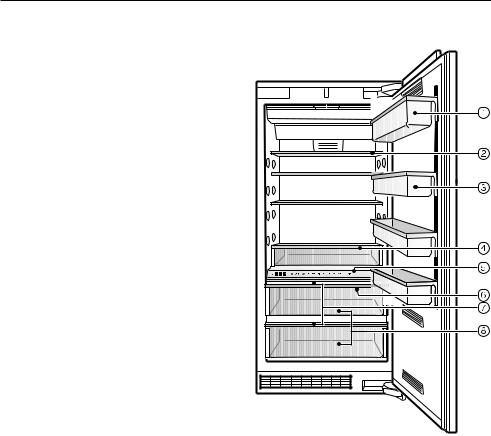
Guide to the refrigerator
a Hinged door shelf
b Shelves (height adjustable)
c Door shelves (height adjustable)
d Deli drawer
e Control panel
f Main switch
g Humidity filters
h SmartFresh drawers
7

Guide to the refrigerator
Control panel
aAccess button "p" activates the control panel
b Refrigerator
c Upper SmartFresh drawer
d Lower SmartFresh drawer
e Temperature displaycolder; warmer
Allows you to set the desired temperature in the refrigerator
fFood type(s) to be stored in the SmartFresh drawers
gOn/Off sensor button for the SuperCool function
hSensor button for the temperature and door alarm*
*Only visible when the relevant function is activated
8
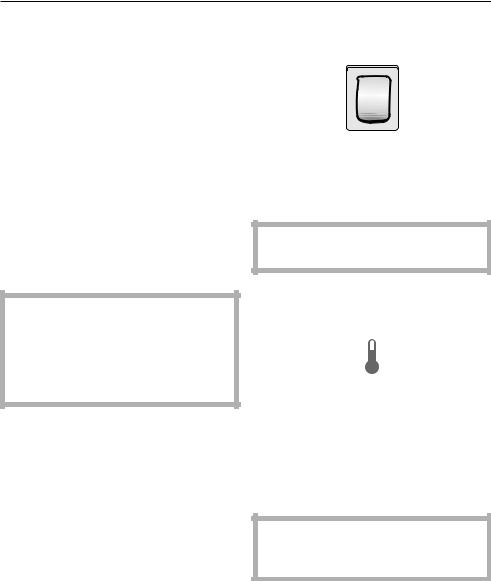
Before use
Before using for the first time
The stainless steel surface of the appliance is protected with a plastic film, which protects it during shipping.
Do not remove this protective film until the appliance has been completely installed.
After removing the protective film clean the exterior surface with the supplied stainless steel agent. This will aid in preventing resoiling.
^Clean the inside of the appliance and the accessories with a mild solution of warm water and liquid dish soap. Dry with a soft cloth.
After installing the appliance, wait at least 30 minutes before switching on the appliance. During transport, fluids in the refrigeration system may have shifted, and will need some time to settle.
Turning the appliance On/Off
^Open the appliance door.
^Turn the appliance On/Off with the main switch.
The main switch is located on the right-side underneath the control panel.
All zones are switched on or off together.
Once on, the appliance begins cooling. When the door is open, the interior lights come on.
The access button will light in the control panel.
The preset temperatures (factory settings) are reached after a few hours. Do not put any food in the appliance until the preset temperatures are reached.
,Switching the appliance off with the main switch does not safely isolate it from the power supply.
9
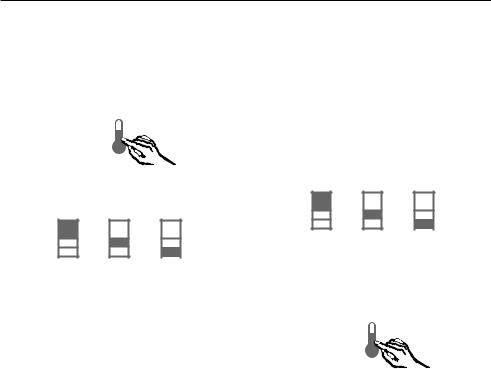
Settings
Using the settings
When a sensor button has been selected with a finger touch, it will appear yellow.
A de-selected button will appear white.
^Touch the access button "p" so it turns yellow.
On the control panel you will now see the sensor buttons for the three appliance zones.
^To change settings (e.g., to set the temperature, etc.), touch the sensor button for the appliance zone you wish to set.
The selected sensor button appears yellow and depending on the zone selected, additional sensor buttons will appear on the control panel.
Depending on the zone selected, you can now:
–adjust the temperature,
–select the SuperCool function or
–select settings for the SmartFresh drawers by food type.
For additional information, see the corresponding sections in the manual.
^To de-select a zone touch the sensor button for that particular zone so that it turns white or select another sensor button.
^To leave the settings menu, touch the access button "p" so it turns white. The last settings entered are stored. If the access button is not pressed the display will go out after approx. 30 secs.
The sensor buttons for the three appliance zones now disappear from the control panel.
10

Settings
Custom settings
In the custom settings mode you can select and change functions. The function possibilities are described in the respective chapters of this manual.
Function |
Display text |
|
|
Temperature |
† |
°C - °F |
|
|
|
RemoteVision |
; |
Module settings |
|
(optional accessory) |
|
|
|
Button sound on/off |
= |
Exit Custom Settings |
c |
mode |
|
|
|
Turning the button sound On/Off
If you prefer the buttons to be silent when touched the button sound can be turned off.
^Touch the access button "p" so it turns yellow.
^Touch the sensor button for the refrigerator so it turns yellow.
^Note the position of the button, but do not touch.
^Touch the access button "p" again so it turns white.
Only the access button "p" is visible.
^Place one finger on the position of the button and hold (the button will not be visible).
^While holding down the button, press the access button "p" once. Keep holding the button down until the following appears in the display (approx. 5 seconds).
^Tap the button until = appears in the display.
^Touch the access button "p" to confirm.
11

Settings
^By touching the button, you can choose between:
=0 : Button sound is off
=1 : Button sound is on
=– : Return to menu.
^Touch the access button "p" to confirm the setting.
^Tap the button until you see ; in the display.
^Touch the access button "p".
You have now left the Custom settings mode.
When you are in the Custom settings mode the door alarm is turned off automatically. Once the door is closed it is reactivated.
Turning off for longer periods of time
If the appliance is not going to be used for an extended time (for example, during a vacation) some precautions should be taken.
^Take all food out of the appliance
^Turn the appliance off at the main switch
^Unplug the appliance
^Clean the interior
^Leave the door open to prevent odors
12

Alarm
The appliance is equipped with an alarm system, to ensure that the temperature does not rise unnoticed because of energy loss or an open door.
The alarm system is always operational, it does not need to be switched on.
Temperature alarm
If the temperature becomes too warm, an alarm sounds, the "alarm" indicator turns red and flashes. At the same time the affected zone flashes in the display.
The alarm will sound and the display will flash if:
–too much warm air flows into the appliance, for example when food is being loaded, re-arranged, or taken out.
–large amounts of food are loaded at once.
–the power fails.
Turning the temperature alarm Off
As soon as the alarm condition is corrected, the alarm signal turns off and the affected zone stops flashing in the display. The "alarm" indicator goes out.
^To turn the alarm off early, press the "alarm" sensor button.
The alarm signal turns off. The "alarm" indicator remains red and the corresponding appliance zone continues to flash until the alarm condition is corrected.
Door alarm
If the appliance door is left open, an alarm signal will sound and the "alarm" indicator will turn red after five minutes.
Turning the door alarm Off
Once the door is closed the alarm turns off and the "alarm" indicator goes out. If the door has not been closed properly, the alarm will sound again after five minutes.
^To turn the alarm off early, press the "alarm" sensor button. The "alarm" indicator and signal will turn off.
13

Setting the temperature
Setting the temperature in the refrigerator
^Touch the access button "p" so it turns yellow.
^Touch the sensor button for the refrigerator so it turns yellow.
^Use the and buttons next to the temperature display to set the temperature warmer or colder.
Tap the and sensor buttons to raise/lower the temperature 1°, or hold it down to move through the temperature range more quickly.
The temperature display on the operating panel always shows the desired temperature.
Temperature range
The temperature can be selected within the following ranges:
–Refrigerator :
35 to 46° F (2°C to 8°C)
A temperature of 37°F (4°C) in the refrigerator section is recommended.
The room temperature and the installation location can affect the time it takes for the appliance to get to the desired temperature. If the room temperature is too high, it may not be possible for the appliance to reach the lowest temperature.
14
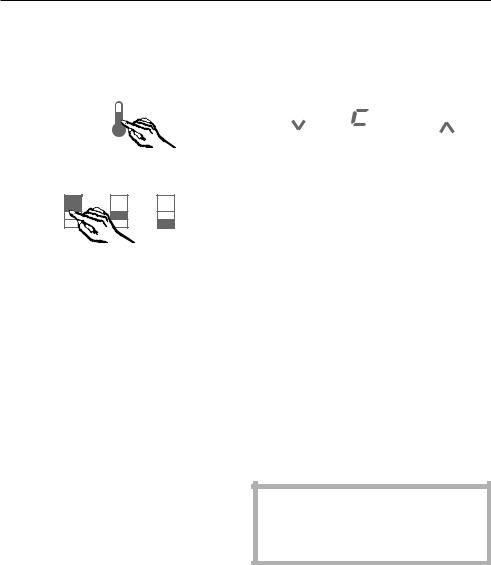
Setting the temperature
Temperature unit (Fahrenheit/Celsius)
The temperature can be displayed in degrees Fahrenheit (°F) or Celsius (°C).
^Touch the access button "p" so it turns yellow.
^Touch the sensor button for the refrigerator section so it turns yellow.
^Note the position of the button, but do not touch.
^Touch the access button "p" again so it turns white.
Only the access button "p" is visible.
^Place one finger on the position of the button and hold (the button will not be visible).
^While holding down the button, press the access button "p" once. Keep holding the button down until the following appears in the display (approx. 5 seconds).
^Tap the button until † appears in the display.
^Touch the access button "p" to confirm.
^By touching the button you can select either Fahrenheit or Celsius for the temperature display.
†0: Fahrenheit
†1: Celsius
†–: return to menu
^Touch the access button "p" to confirm the setting.
^Tap the button until a ; appears in the display.
^Touch the access button "p".
You have left the Custom settings mode.
When you are in the Custom settings mode the door alarm is turned off automatically. Once the door is closed it is reactivated.
15

SmartFresh drawers
The SmartFresh drawers provide the right combination of temperature and humidity. The result is freshness up to three times longer than in the other zones of the refrigerator.
Storage temperatures
For fresh foods that are not adversely affected by cold, the best range is
32° - 37°F (0° - 3°C). This helps to keep the food fresh considerably longer than in the rest of the refrigerator, spoiling is minimal.
The temperature is set to approx. 35°F (1.5°C).
Humidity
The closer the humidity in the appliance matches the moisture content of the food, the more moisture the food will retain, and the fresher and crisper it will stay over a longer period of time.
The optimal humidity is determined on the basis of the food stored in the appliance.
Proper humidity is assisted by 2 humidity filters located above the SmartFresh drawers. These filters allow air to pass through, yet retain moisture.
Using the SmartFresh drawers
^Use the sensor button to select the desired drawer.
The selected sensor button turns yellow, and the sensor buttons for the food choices appear.
The most recently selected food type(s) appear yellow.
^Use the sensor buttons to select the food type(s).
–Several food types can be selected at the same time.
–To delete a food type, simply press it again.
–Depending on the food types selected, the optimal humidity is determined for the SmartFresh drawers.
–The "deli" and "dairy" settings are the most energy efficient.
^Touch the access button to confirm the settings.
^Place the food in the drawer.
16

SmartFresh drawers
For optimal storage conditions, it is always best to store similar foods together in one drawer.
The upper SmartFresh drawer is the best place to store moisture sensitive foods.
Foods that are best stored under dry conditions
–fresh fish and shellfish, meats, poultry, sausage, dairy products and deli salads.
Foods that are best stored under moist conditions
–fresh produce, e.g., vegetables, lettuce, herbs, mushrooms, cabbage, fruit.
Remember that higher moisture levels can only be attained when the food is stored unpacked so air can circulate freely.
17
